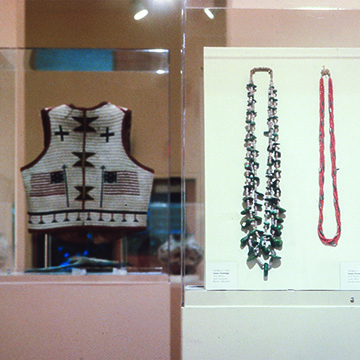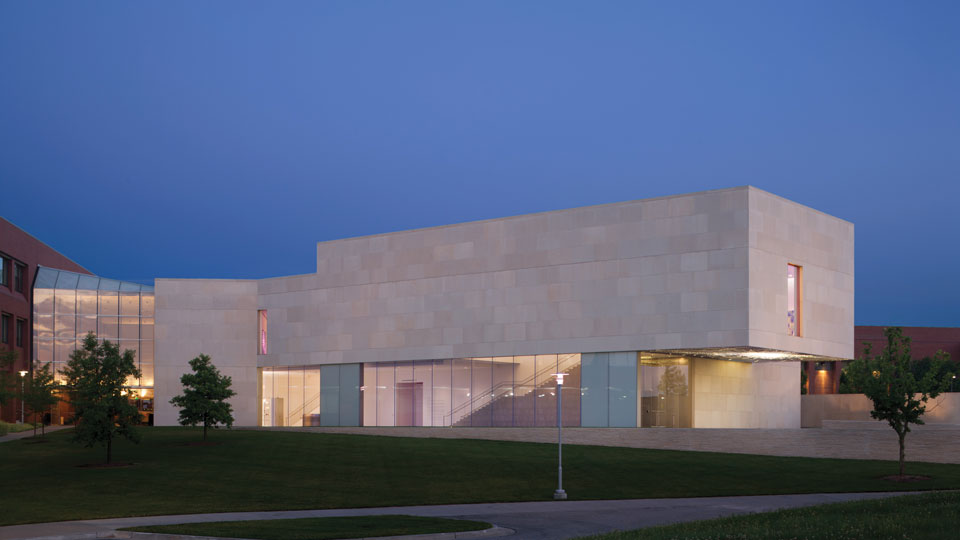Native American Art · From Kansas City Collections
The tremendous diversity of Native American society and the equally diverse art forms it produced cannot be emphasized enough. Consequently, a variety of works from different regions were selected for this exhibition. Chosen for their aesthetic merit, all pieces were produced after European contact and date from the 19th century to the present day.
The artwork of numerous Native American cultures, which varied greatly, are represented in the exhibition. Plains cultures were essentially nomadic and made works that could be packed and hauled great distances. The societies along the Northwest coast, by contrast, lived in permanent communities and created masks and other pieces which are considered among the most important of Native American art works. The Pomo tribe of California is widely considered to have been the finest group of basketmakers in the world.
This is the largest exhibition of Native American art in Kansas City since the Sacred Circles showing at the Nelson-Atkins Museum in 1976. The JCCC exhibition will feature more than 60 works, including pottery, clothing, jewelry and textiles from local private and public collections, many of which have never been shown publicly. Works range from a delicately woven basket from the Aleutian Islands to the flamboyance of a Cheyenne War Shirt.
Ralph (Ted) Coe, one of the world’s foremost experts on Native American art, will lecture at the opening at 3 p.m. Sunday, November 3, as part of the opening reception. Coe, former director of the Nelson-Atkins Museum, curated Sacred Circles and most recently Lost and Found Treasures, an exhibition focusing on contemporary Native American art.
Native American art boomed when passenger trains traveling back and forth to California during the 1930s, ‘40s and ‘50s stopped at trackside stands long enough for neophyte collectors to stock up on rugs, baskets and pottery.
Works in the exhibition also illustrate the changes brought about by European influences. Native Americans adapted traditional styles and techniques to accommodate the introduction of new materials. Cotton and wool from Europe often replaced leather. Colored glass beads from Venice and Czechoslovakia became an important decorative element alongside shells, seeds, bird beaks, dried hooves, and porcupine quills.
While the vast majority of objects in this exhibition date to the late 19th and early 20th centuries, it is essential to note that Native American artists continue to produce works that build upon, expand and enrich their respective cultural traditions. In doing so, they contribute to one of America’s most important artistic legacies. This exhibition will be a unique opportunity for students and the community to view some of the finest works of art produced by Native American cultures. As we prepare for the 500th anniversary of Columbus' first voyage to America, it seems both timely and ironic to consider that many people remain virtually unaware of the diversity of Native American culture and accomplishments.
We are deeply grateful to the private collectors and public institutions who loaned works for this exhibition. Without exception, the lenders we approached responded to our requests with considerable generosity and enthusiasm. In particular, we would like to thank David Ucko, president of the Kansas City Museum, and Julie Mattsson, the museum's registrar, for their invaluable assistance. Finally, a special thank you to JCCC Community Services, and especially Judith Choice, program coordinator, for organizing and supporting a diverse offering of lectures, conferences and performances pertaining to Native American art and history.






